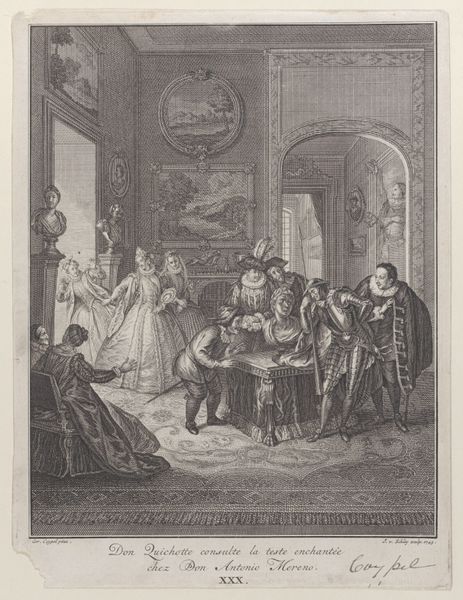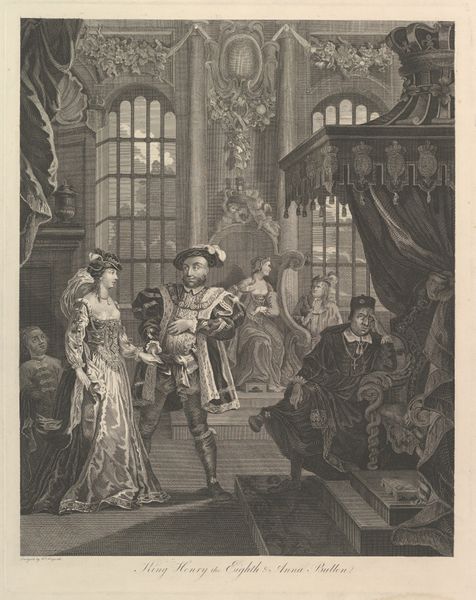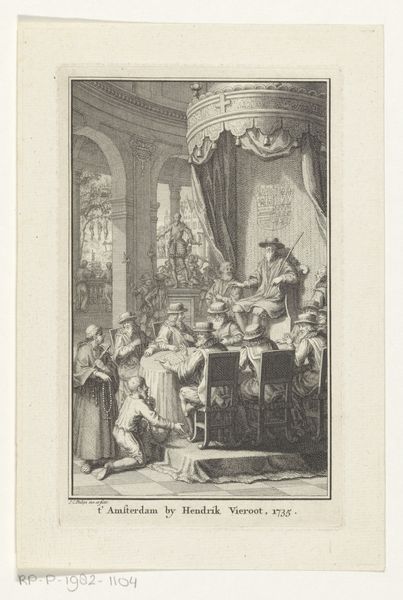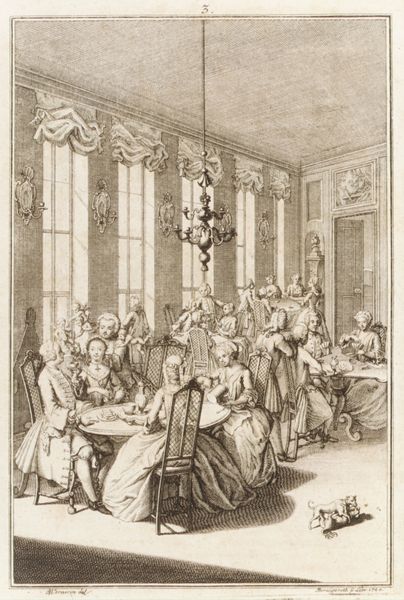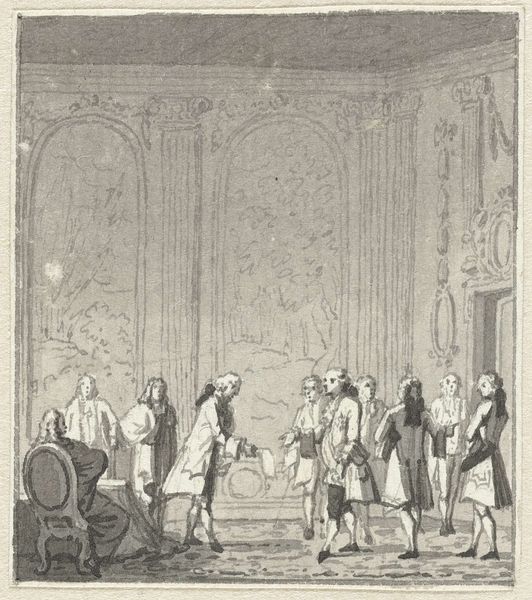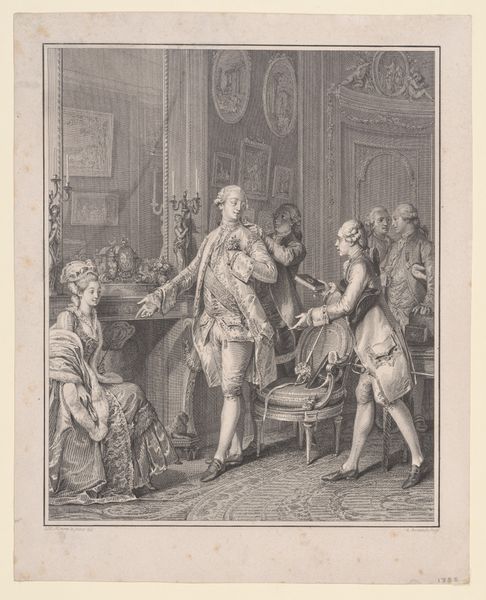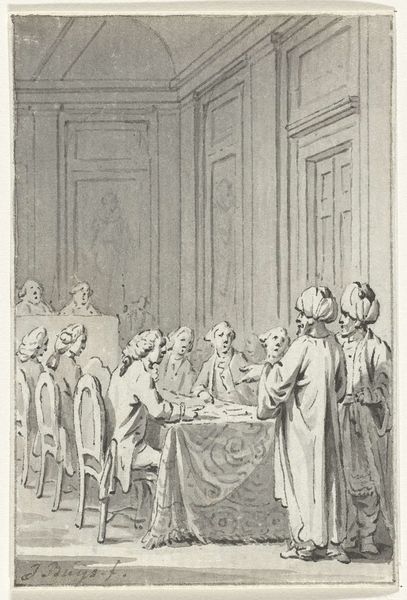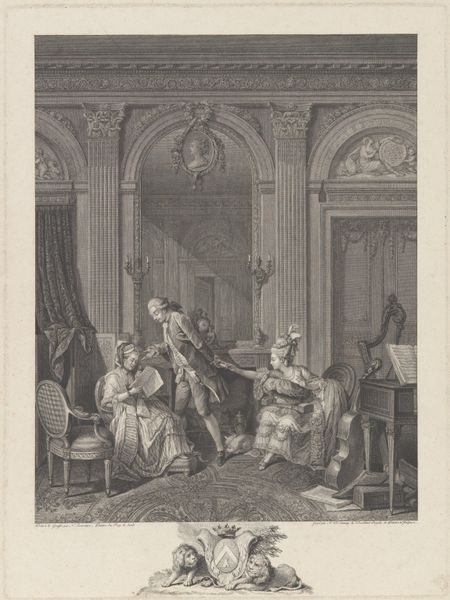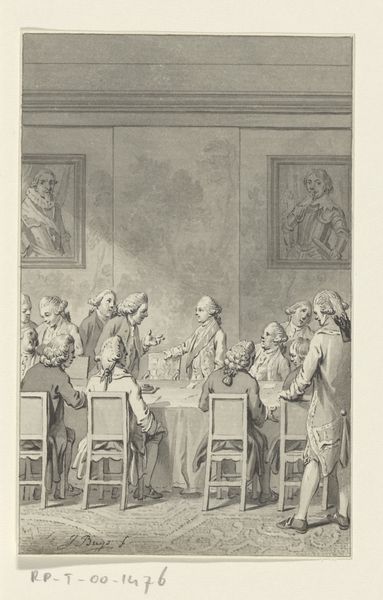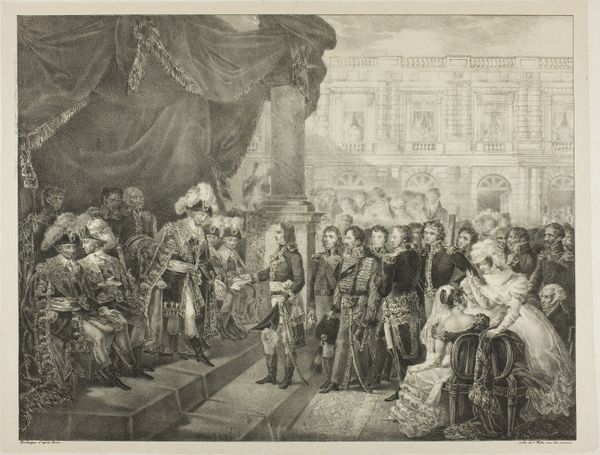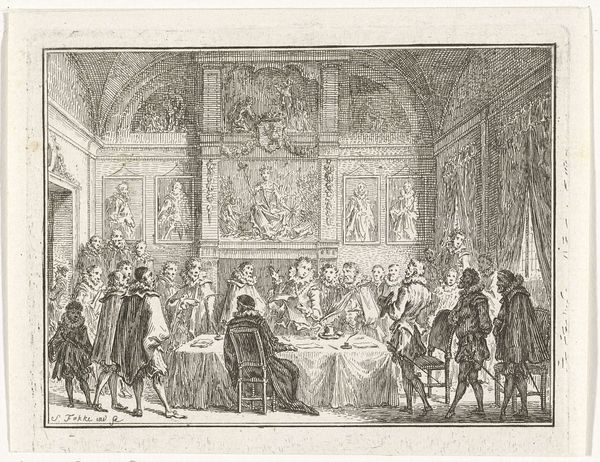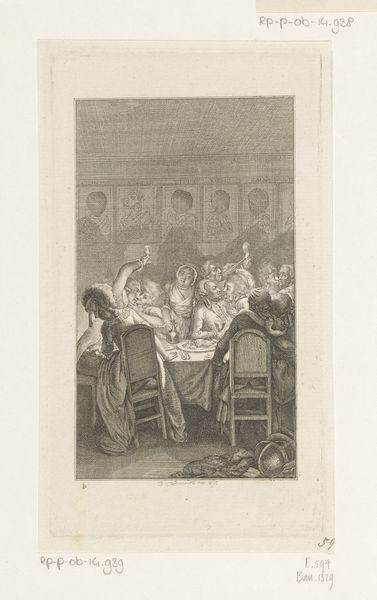
print, etching, engraving
#
narrative-art
# print
#
etching
#
genre-painting
#
history-painting
#
engraving
#
realism
Dimensions: 239 mm (height) x 179 mm (width) (bladmaal)
Curator: Let’s take a look at this illustration by André Bork. It’s titled "Illustration til 'Jeppe på bjerget'," and while dated 1854 to 1932, it most likely refers to a stage production from that time. It's a print, employing both etching and engraving techniques. My first impression is the composition creates a stage-like setting. Editor: Immediately, I’m struck by the clear visual language of humiliation. The central figure seems utterly bewildered, the composition almost trapping him in a narrative of disempowerment. What can you tell me about the context here? Curator: Well, “Jeppe på bjerget,” is a play by Ludvig Holberg, a satirical piece, quite popular in its day. This image captures a key scene; Jeppe, a peasant, is tricked into believing he's a baron. You can clearly see his disheveled clothes juxtaposed with the finery around him. Editor: The clothing! Exactly, the stark contrast emphasizes social commentary but, zooming in on the room itself, the cannons adorning the cornice—what purpose might these symbols have served? Is Bork, the artist, giving us an insight into military prowess of this Baron? Curator: That’s an interesting point, the weaponry above suggests a world of power and control, a ruling class distant from the daily struggles of someone like Jeppe. The medium also contributes, the act of engraving is one of immense skill and labor—perhaps underscoring the laborious efforts that underpinned the aristocratic world. The choice to render it as a reproducible print allowed for wide dissemination, bringing the story and its message to a broader audience. Editor: Absolutely, beyond its political subtext, the artist gives clues in facial expressions. Note the subtle hints of condescension around the table and the general layout of the scene, like pieces of a grand symbolic arrangement where humiliation and irony is the overall theme. Curator: It certainly adds layers to Holberg's original satire. It highlights, for me, how deeply the class divisions impacted individual experiences in 18th-century Denmark. This rendering of material inequalities feels especially strong. Editor: For me, the enduring power resides in its capacity to communicate timeless themes—mockery, manipulation—represented visually for generations to contemplate. Curator: Yes, a stark visual reminder that speaks even today, in spite of changes in the means of artistic production. Editor: And reminding us of the power visual metaphors and dramatic interpretations.
Comments
No comments
Be the first to comment and join the conversation on the ultimate creative platform.
